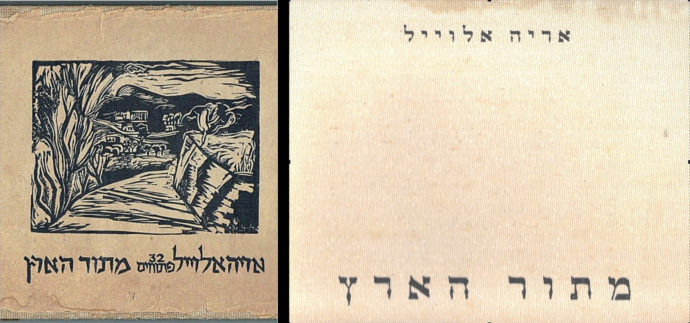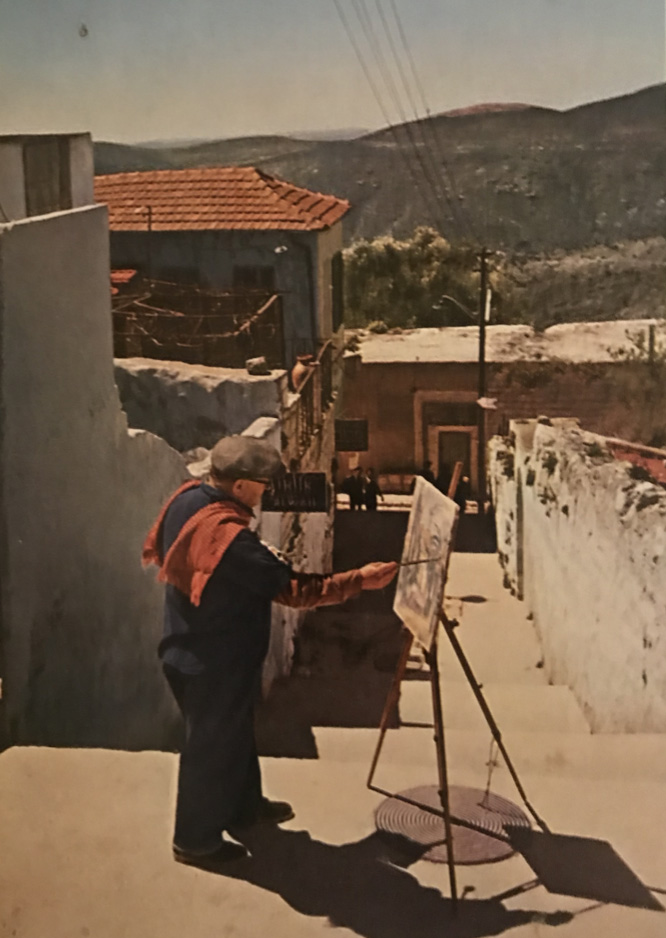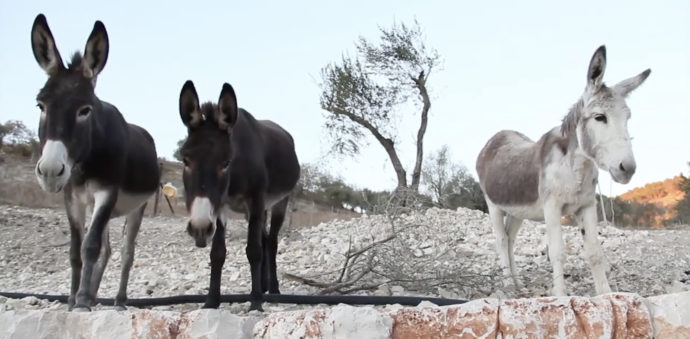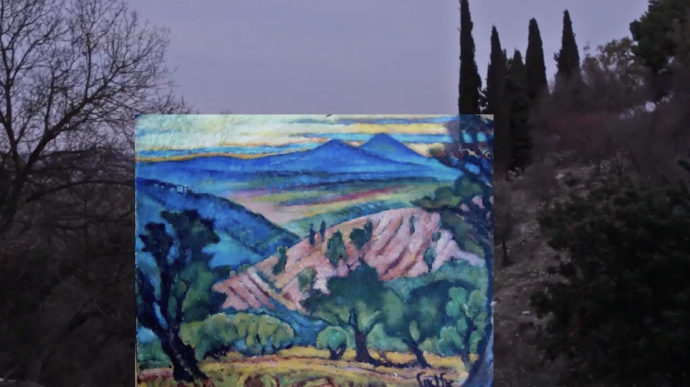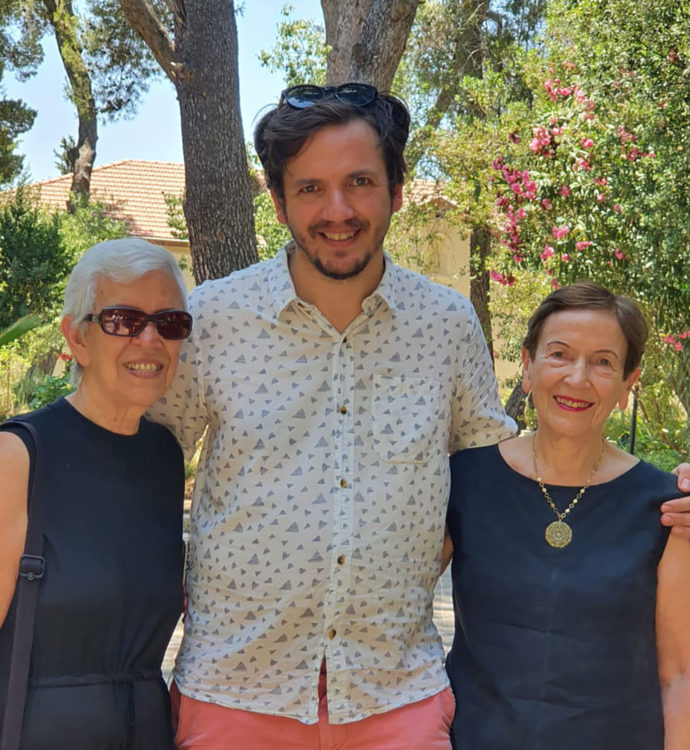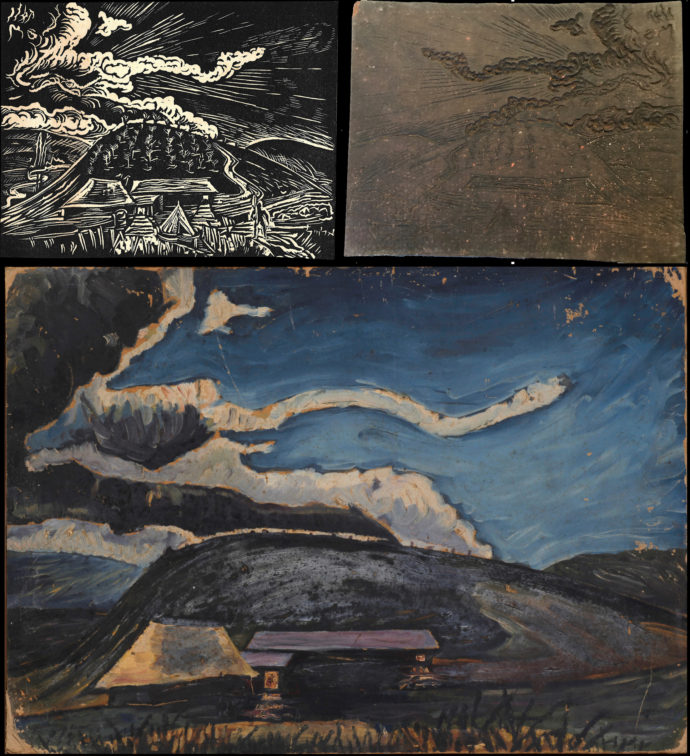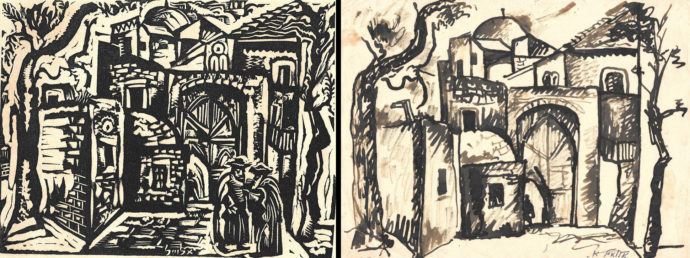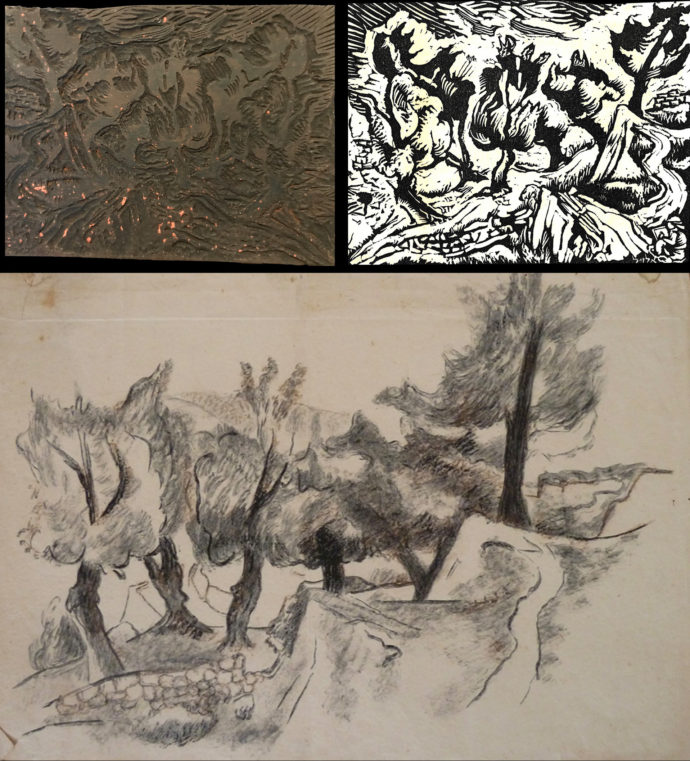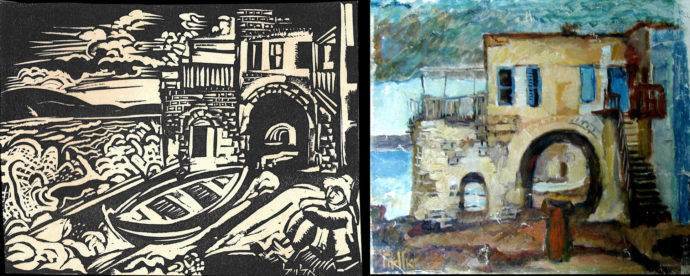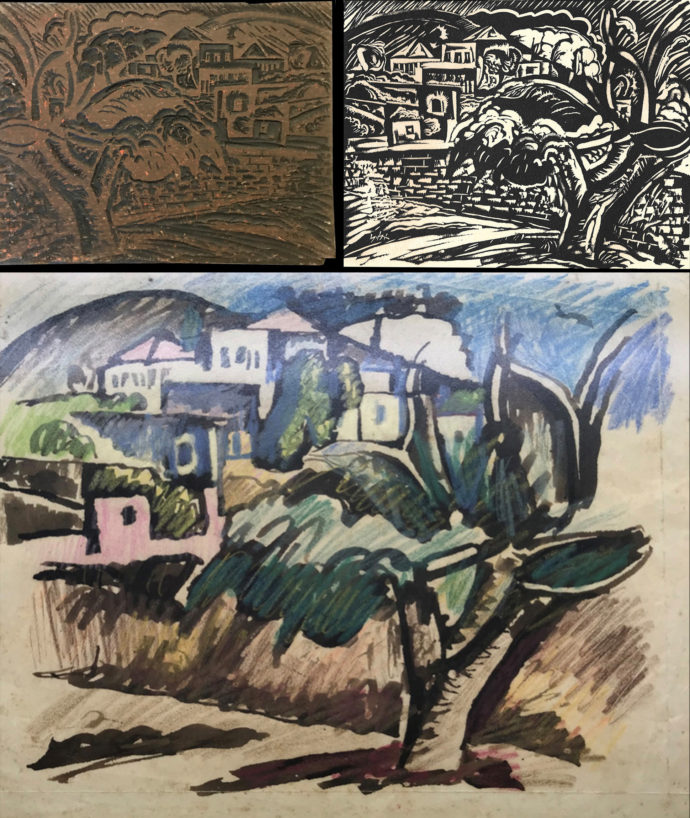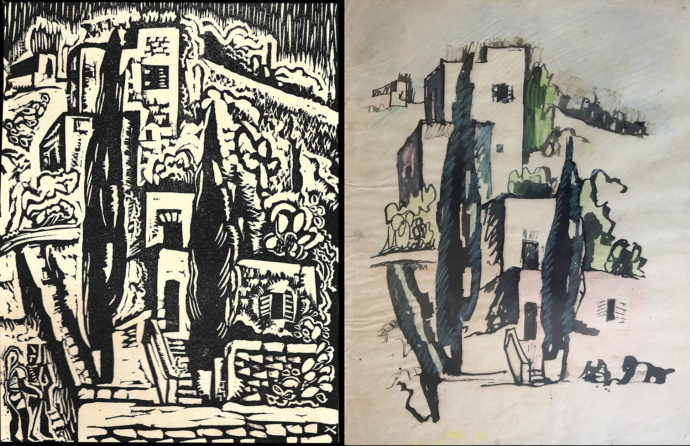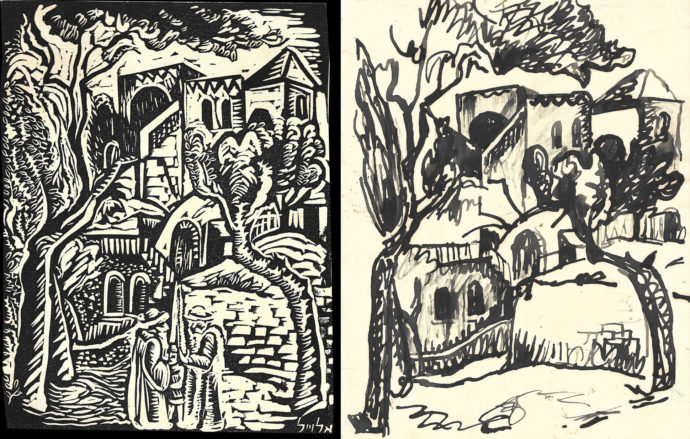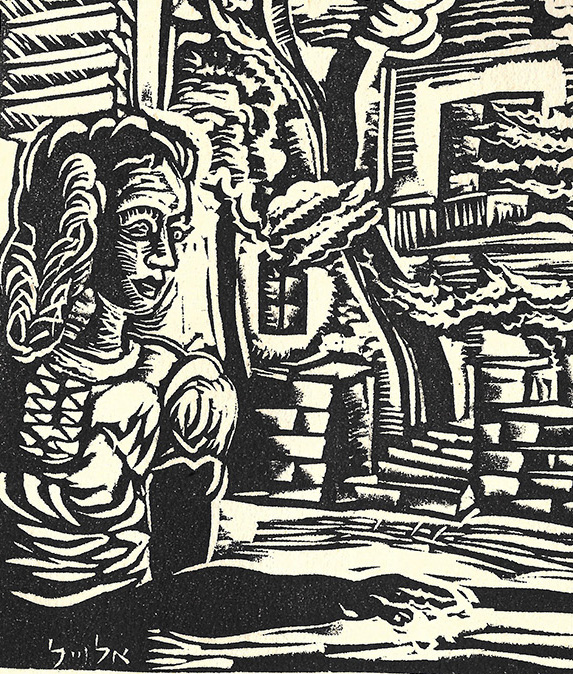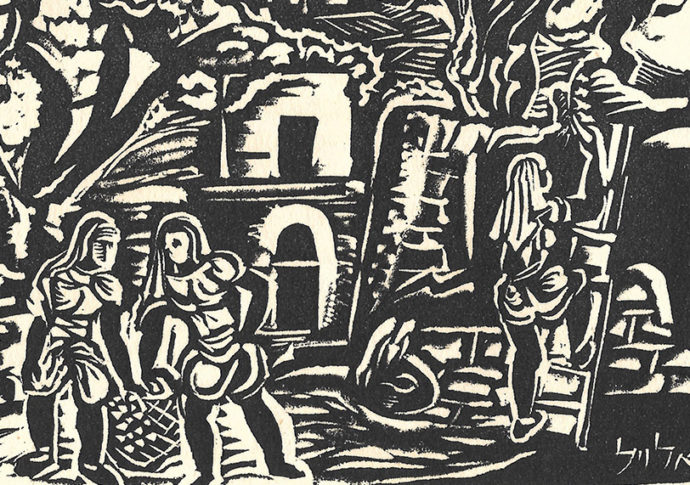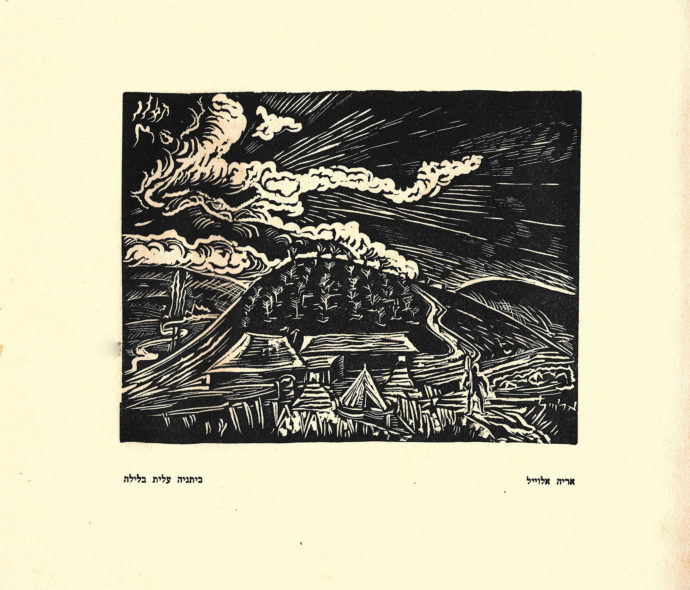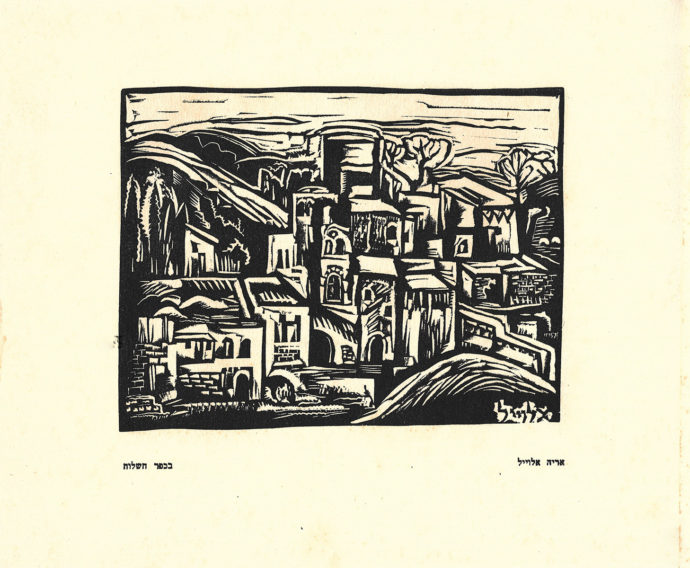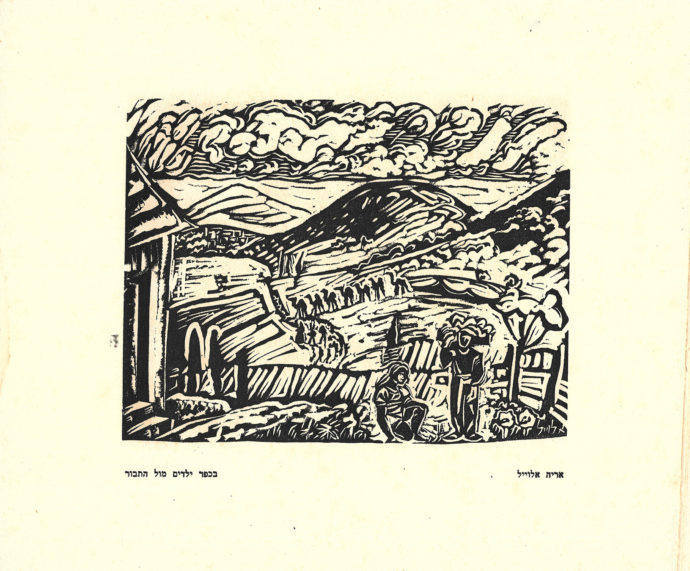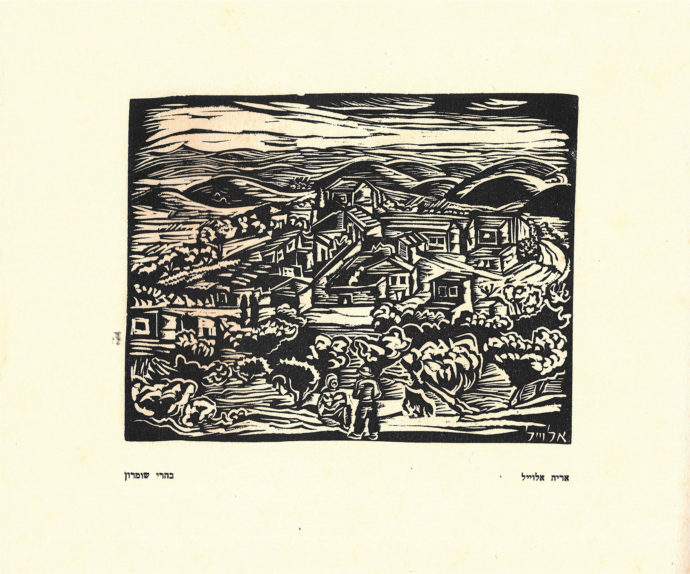Arieh Allweil: Touring the Land
introduction
This ART I SEE blog post, the sixth on the artist Arieh Allweil (1901-1967), presents his 1939 book Touring the Land. In format it is very similar to his book The Anonymous Jew, also 1939, in that it simply features an introduction essay by Max Brod, an index of the linocuts, followed by 32 linocuts with brief captions corresponding to the index. (The Anonymous Jew is covered in my previous Allweil blog post: LINK) A few years later Allweil produced a second edition of Touring, but Allweil added so much new material–color linocuts and text opposite the original 32 linocuts–that it’s best to think of it as a major revision. This blog will concentrate on the first edition in part because this blogger’s longstanding interest in wordless narratives.
In her book Arieh Allweil: From Bitania to Vienna and Back, Galia Gavish wrote: “From 1939 to 1943, Allweil published several books which he illustrated with linoleum prints. Touring the Land …. was the first. The black and white prints form a collection of the landscapes of Eretz Israel which Allweil painted during his first years in the country, including views of Shfeya, Mikveh Israel, Jerusalem, Tiberias and the Galilee.” (Her book accompanied a 2011 exhibition that she curated at the Uri and Rami Nechushtan Museum in Ashdot.)
When Gavish wrote “his first years in the country,” she was referring to 1920 when as a Zionist pioneer he helped found the Bitanya Illit kibbutz. But the farming life on the kibbutz didn’t suit him. In 1921 he travelled to Vienna for art instruction at the prestigious Kunstgewerbeschule. He returned to Eretz Israel (Palestine) in 1926 and became a well respected artist and teacher. He was one of the founders of the Tel Aviv Museum (1933) as well as the Midrasha Art Teachers’ College. (A more detailed biography is found in my first post on the artist: LINK. That post also gives a snapshot of all of his remarkable books from 1939-1943.)
“The work in Touring,” his daughter Nava Rosenfeld wrote in an email, “is based on drawings Allweil did traveling in the country, after he came here in 1926. The word ‘Touring’ is from the Bible: ‘And they came back from touring the land’ ( Numbers 13/25 -), which he put in the inside cover of the second edition. He was young. He came back [to Palestine from Europe] to start new life. He was searching and studying.”
She added, “He made Touring [in 1939] when he was 38 years old, but the linocuts are based mostly on work he did on the 20s and the beginning of the 30s.”
For Galia Bar Or’s 2015 exhibition at the Miskkan Museum of Art, Ein Harod, she wrote the book Arieh Allweil: Letters, Figures, Landscapes. She praised the Allweil books that succeeded Touring the Land, namely The Anonymous Jew, The Book of Amos (1940), The Scroll of Esther (1942) and Lamentations (1943). Bar Or wrote that the books “in a unique and topical way express his suppressed anguish at the horrors of the Holocaust period.”
According to Bar Or, in Touring the Land (as well as his book The Scroll of Ruth, 1939) “which he created before World War II, the anguished pain and the nightmarish horror that characterize his next books are still absent, although in the seemingly idyllic Touring the Land a nerve web of menace and dread stirs beneath the surface of the landscape, for example in the vista of open landscape that serves as a strange realistic backdrop for two donkeys dying.” (To see examples of Allweil’s more anguished imagery, check out my blog post with the complete linocuts in his Book of Amos. LINK)
The book Touring the Land and its contents are presented courtesy of the Estate of Arieh Allweil.
Family photographs and photographs of the linocuts from Touring the Land are presented courtesy of the Estate of Arieh Allweil.
Touring the land, the movie
Fortunately some of the land that inspired Arieh Allweil to draw and paint and carve linoleum blocks has been captured in a short film: Finding Directions: Israeli landscapes in the art of Arieh Allweil. The director was Gil Sperling, son of Ruth Sperling (Allweil’s other daughter) and grandson of Allweil. He was born after Allweil died. So in making the film he had the opportunity to see the land of Israel through his grandfather’s eye.
The film was made for presentation at a 2011 Allweil exhibition at the Kampo Museum in Kyoto, Japan. In an email, Ruth Sperling wrote: “In that exhibition we [Ruth and her sister Nava Rosenfeld] exhibited both our father’s Biblical books and oil paintings of our father from the later years from Zichron, Shfeya, and from Zafed. Although linocuts from these places are found in Touring The Land, Gil’s movie is related to his oil paintings from later years.
“It was the idea of the curator of the exhibition, Yuri Harada, to come to Israel and photograph the places our father painted to show in the exhibition next to the original paintings; however, she was unable to come.”
It was first thought that Gil Sperling could take on the curator’s photo project. But as he wrote in an email: “Since I am no photographer, I adjusted the premise to the creation of a short film. It was quite a challenge making the connection/juxtaposition between oil painting and moving image. Allweil in his remarks describes the painting process in terms of contending with the elements of time and light, and I saw in that a connection, something that video can elaborate on.”
The Allweil daughters served as location guides for the movie. They were intimately aware of where their father sketched and painted. Ruth Sperling wrote: “In the 40s and early 50s, we used to spend the whole school summer vacation in this area [north of Tel Aviv]. Father would paint and we had a summer vacation....
“From 1952 on, the whole family spent the summer vacations in Safed. Our father painted the landscapes from different areas in and around Safed. We lived with the paintings. Every early morning he would go to nature to paint. When we got up in the morning, he already returned enthusiastically from his painting session, telling us about the beauty of the places and share his experiences with us, especially when he had a good day. He was so happy. In the evening he was already waiting impatiently for the morning to paint. He would tell us that his hands are urging to paint. So we knew and loved the places, and we shared these experiences with our kids and took them to Shfeya and Zichron and to the places in Safed.”
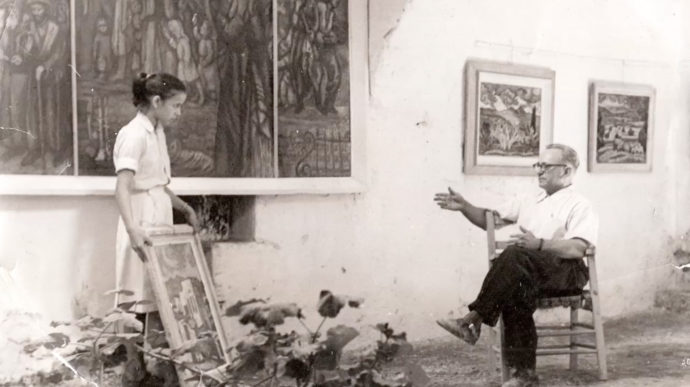
Nava Rosenfeld wrote that this c. 1955 photo “was taken in the ‘Blue Dome’ that was next to our first house [in Safed]. It shows the big picture he did on 1946 called ‘The Other Exodus.’ (It was stolen from our house and was printed in the [Allweil’s] Passover Haggada.) I was about 12 years old. I think he was talking for a radio show or something.”
Her sister agreed: “We grew up surrounded with paintings and loved the places and the paintings. They are essential elements of us.”
Making the film proved to be an important family affair. Ruth Sperling wrote: “Taking Gil to the places our father painted was a real treat for all of us. We did it in a number of sessions. The first one was to Safed. We drove to Safed–Yossi [Sperling’s husband], Gil, Nava and me. We were searching for the places our father painted, but some of them have changed because of new buildings, but we were able to locate all the places. We also met people who were excited to hear that we are making the movie for an exhibition of Allweil in Japan, and they all wanted to help.”
Gil Sperling wrote: “Having never met my grandfather, all I had were the stories from my mother and his art work. I’m not sure I was able to get a more vivid image of him through the work on the movie, but I did get a clearer glimpse at my mom’s and aunt’s childhood. Another strong memory from the experience is the time spent with my father, who joined us on the filming trip, and happily served as my ‘camera assistant.’ I left for the U.S. shortly thereafter, and in 2013 my father passed away. So it turned out that those hours trekking through the hills of the Galilee carrying a tripod were some of our last shared moments.”
(Joseph (Yossi) Sperling, 1939-2013, was a professor of organic chemistry at the Weizmann Institute.)
Ruth Sperling wrote: “It was also exciting to return to places we knew so well from our youth. One of the places was a place our father told us the artists used to call ‘Paradise’ (‘Gan Eden’ in Hebrew). We went there and walked along and Gil filmed. There we also encountered a group of donkeys, and Gil had a long session there. That was a a special day for the four of us.
“Next, Yossi, Gil and I went to Shfeya-Zichron, and it was exciting to search for the places. Some places changed and it took time to find, but some views were the same, an exciting to find. Visiting the places reminded me of stories from my childhood which I told Gil, as Yossi already knew them.
“Then Gil said he wanted to film at sunrise, as that was the time father painted in early morning, before the sun was burning everything. He went once with Yossi to Bitanya, and the next day I went with him to film Safed at sunrise. This was a very special session, and I thank Gil for this idea, which enabled us to see nature as father saw it. We left the hotel at Safed when it was still dark and cold (early spring), and went to ‘Paradise.’ Gil set the camera, and we went back to the car as it was cold, waiting for sunrise. In a very short time nature was waking up. Sunrise was like a miracle of changing colours and textures. A unique time of beauty and revival.”
As shown above, Allweil paintings were sometimes positioned into the landscapes that Gil Sperling filmed. In other places in the film, an image of a painting precedes or follows a view of the landscape. In the case of the donkeys, a painted sketch of them appears after a brief video of donkeys. The film was narrated with the words of the artist taken from his “Autobiographical Remarks” that begins the 1953 book Arieh Allweil by Max Brod and I. M. Lask (SINAI Publishing, Tel Aviv). The film was made in two versions: one in Hebrew and one in English. Here is a link to the English version:
Asked how he was similar to his grandfather as an artist, Gil Sperling wrote: “One point of connection is our interest in Jewish religious texts as material for artistic expression. I have had ideas about adapting the biblical stories into opera. I experimented with that in my opera project A Yiddishe Wagner, which sets Wagner’s music to a libretto in Yiddish based on text from the Book of Samuel. Our relationship to the text is different. My grandfather was a devout Zionist who saw his art as part of the Jewish revival in Israel, while I am critical of the ways in which sacred texts have been used to justify nationalism and violence. But the idea of the artist as the successor to the prophet, taking the old stories of his culture and communicating through them about his own reality, is one that resonates with me.
Learn more about this accomplished videographer and multimedia artist at: http://www.gilsperling.com/home/
Touring the Land: working method
While the exhibition in Japan led to the production of Gil Sperling’s movie, Galia Gavish’s 2008 Allweil exhibition–”Arieh Allweil: Prints & Calligraphy 1939-1949″–at the Isaac Kaplan Old Yishuv Court Museum fostered the reevaluation of Allweil’s drawings that he referred to in carving the Touring linocuts.
Nava Rosenfeld recalled that her father “made Touring when he was 38 years old, but the linocuts are based mostly on work he did on the 20s and the beginning of the 30s. I always loved his drawings. He had so many. And I tried to keep them in groups by date or subject. It was Galia Gavish who told me about the importance of drawings. When I helped her for the exhibition in 2008 in Jerusalem, she asked me if I can find drawings relating to the linocuts. I started to work on it and found it fascinating. She exhibited whole sheets of the books, alongside with the drawings.”
Rosenfeld also helped Gavish with her 2011 Allweil exhibition at the Uri and Rami Nechushtan Museum in Ashdot. “At that exhibition,” she wrote, “we put on one wall the paintings from Vienna, and on the wall facing it the pictures Allweil did on the first years of his coming back to Israel. (Michal, my daughter, suggested this idea.) Entering into the museum it was apparent immediately the change he was undergoing. At that exhibition Touring was exhibited. And again I searched for the drawings the linocuts were based upon. It was exciting. We realized they were based on the first years in Israel. The linocuts are made as if by one hand. But the drawings are different and the paintings also. Working on each linocut was exciting and inspired me with understanding of my father.”
The following are ten of the linocuts in Touring juxtaposed with a related drawing or paintings and sometimes with the linoleum block as well.
The first plate in Touring depicts the Bitanya Illit, the kibbutz that Allweil helped found in 1920. Beside it is its linoleum block, and below is the oil painting that inspired the linocut.
A drawing Allweil did of inside the walls of Jerusalem is paired with the 4th plate in Touring.
The 8th linocut in Touring is matched with its block and Allweil’s drawing of olive trees.
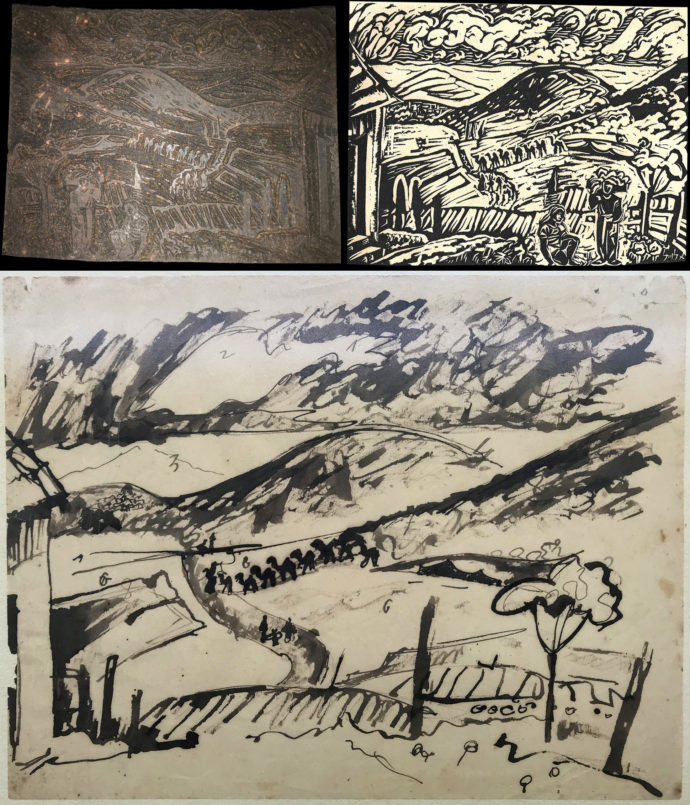
A pen-and-ink drawing and a linoleum block are shown with the 13th Touring plate of Kfar Yeladim. It appears that Allweil made notations in the drawing that may refer to colors. Perhaps the drawing was a study for a painting.
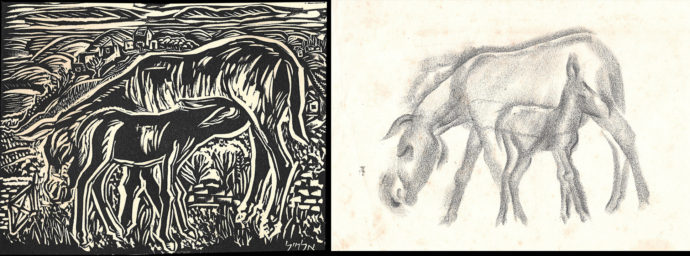
A drawing of a donkey and her foal is paired with the 17th plate in Touring.
A painting Allweil did of Tiberias is matched to the 21st plate in Touring.
An ink and pastel drawing of Rosh Pina was the model for the 23rd plate in Touring. The linoleum block has survived as well.
Cypresses at Rosh Pina were the inspiration for the 25th plate in Touring.
For the 26th Touring linocut Allweil used his drawing of Safed. Here like in the Tiberias, the Jerusalem and the Kfar Yeladim plates, he added figures in the foreground when he carved the block.
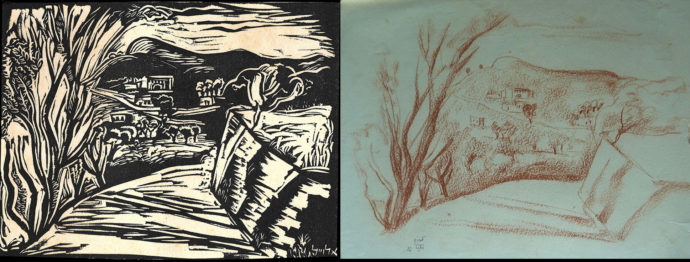
Allweil’s conté crayon drawing of the road to Meiron was the study for the 28th plate in Touring.
Touring the Land: The Book
Now that this blog has attempted to put Arieh Allweil’s 1939 book Touring the Land in context with the artist’s life, revisited the landscapes of northern Israel via Gil Sperling’s film, and juxtaposed some of the linocuts in Touring with sketches and paintings, finally here is the book itself. First is Max Brod’s essay. (Brod is perhaps best known as the biographer of Franz Kafka.) Then all 32 of the book’s linocuts.
Max Brod’s Essay
Some conquests are made with the sword, other conquests are achieved by the Spirit. The former are merely transitory, while the latter accumulate and gradually become treasures of human culture, constantly increasing despite all difficulties and setbacks, and retaining their greatness until the end of the world.
Here is a painter who set out in search of a homeland, in order to conquer a world with his eye, in order to adapt a country, which others of his own people adapted by a measuring line, by the plough and with weapons.
Here we find a selection of the richness of scenery and forms of the land of Israel. Mountains, fields, trees, villages, ancient walls near the harbor, ruin and the line of a new street just laid out–all these are revealed in the pictures selected out of hundreds of graphic works.
The artist shows a unique affection for the countryside. He traverses and explores the country in length and width, from Dan to Beer Sheba. Yet from time to time he would seek some rest and would settle for months or even years in one of the small towns or villages and would produce a picture like the one showing a view from a window of a house in Rosh Pina, permeated with the still air and loneliness of the homeland. And now here another picture (“In the woods of Shfeya”) in which lights and shadows are combined into a magic carpet, with its patches entangled and put together, a creation which could be produced only after the impressions of hundreds of excursions in a lovable place are condensed into a small drop of abundantly fragrant oil.
The paintings evoke the natural pleasure which one derives from looking at pictures, which pleasure augmented if the onlooker possesses a technical knowledge of the art of creation, for he will appreciate that the combination of clear and delicate lines, the utilization of the simplest media (only black on white) introduces into the landscape a solemn style of the grand line, retaining at the same time the truthfulness and respect of an observer of nature. In truth, the artist stylus does not paint, but goes after the sunlight and extract from the plate a few stripes, so the essence that stays in the plate will surround the light and be stronger. This technique looks somewhat like a relief in stone, and so giving rise to the impression of ancient Hebrew sculpturing in some pictures. A sure hand is needed here, since it is not possible to make corrections after the fact.
When a landscape reveals itself in full view, there emerge from its depth the ancient bygone epochs. The characters of the Books of Ruth beautifully match the fields and fruit bearing trees. It seems that the wind, that blows through the verses of the Bible and shakes the ancient words of glory, caresses here the dresses by the well, strikes upon the faces appearing as dark stains shaded by a robe set off against the bright sun of the desert. Or take another picture: A woman ascending a ladder to pick olives while another woman bends down to plant a sapling, and we are wondering whether we live in ancient biblical times or is it modern Israel. Is it not the day before that the Ten Commandments came forth from the lips of the Almighty on Mount Sinai? Is it not the very day when in the heat of noon Abraham welcomed the Angels to whom he offered hospitality under the tree? Amid this heroic landscape time comes to a standstill and we march on the infinite plains without any burden of the past and the present.
Nevertheless, the painter wished to preserve the unity of time and place and opens up this collection with the first painting he made and developed in Israel–the landscape of the Jordan Valley–while in another he sums up his impressions of Jerusalem he absorbed in years. A voyage through the valley brings him to Rosh Pina, from whence he ascends in a winding path to the mountains, to the holy city of Safed, to Meiron and Peqiin. And thus we could have accompanied the artist, whose soul clove to love of the land; in other excursions that he takes bring to mind some private memories that come before us.
However, we prefer to enjoy the fruit of Allweil’s excursions in Israel: the concentrated forms from which the artist, in the course of his long track and increasing knowledge, created his own way of expression, endless in abundance. The artist will never paint the same sky, the same street or even the same building. Still he will always convey to us in his characteristic lines the secret of the landscape and hand us the key for its understanding.
This peculiar approach of the artist is obvious in two groups of paintings. From the forms of the trees, though imaginary, are realistic: the olive trees, in the mountains of Judah, the picking of olives in Motza, the wood of Shfeya. From the great line, almost cartographic, that circumscribes the land and designs the whole scheme of a long line of pictures from the one that shows the Judah Desert with its dying donkeys sprawling on the road, and ends with the Mizpeh landscape in the Galilee to Genossar, from Dan to the Banias, the road to Merion, are evident of full ripeness of art. Herewith you may detect in its simplicity of line and its greatness the division and vision of a land, that has given to the world the gift of One God that so often has rejected her and refused to accept.
But this is the land with whose soul we are struggling as Jacob struggled with the Angel. And we shall not relent until the win and the blessing is our own. If the center theme in The Anonymous Jew is war, then here is Peace on Earth, land as it has always been and as it always renews. The painting, with which Allweil closes the circle of drawings, is the transition to this other book. Here you can find the same theme, but in the Book of the Pioneers the figures are in the center, though here they constitute but a part of the landscape which take on wider and deeper dimensions. With this has the emblem returned to its native place, from which it sprouted and grew. If this be the struggle, the man has won victory.
The 32 linocuts
Bitanya Illit at Night
In Shiloah Village
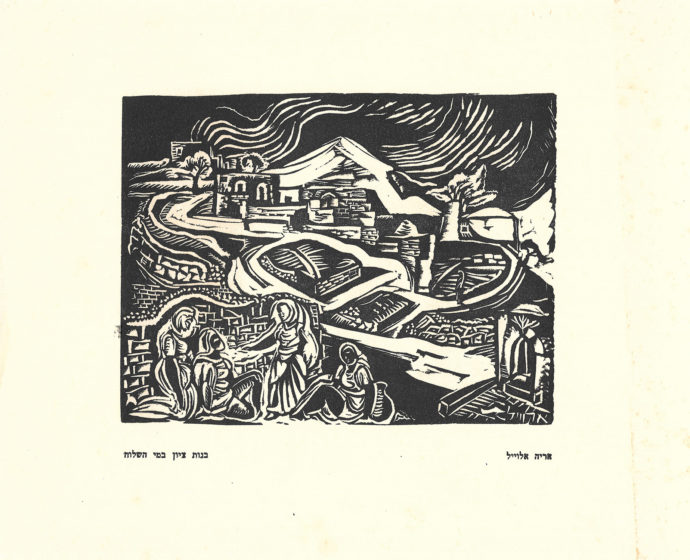
Zion daughters in Shiloah’s waters
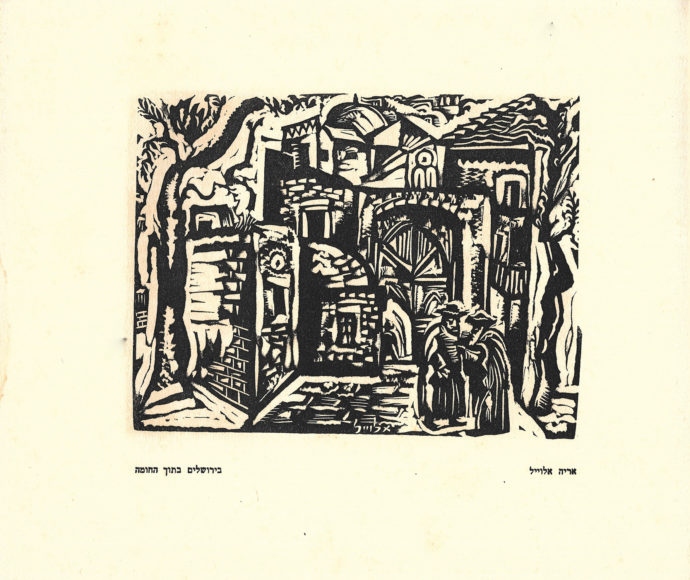
In Jerusalem within the walls
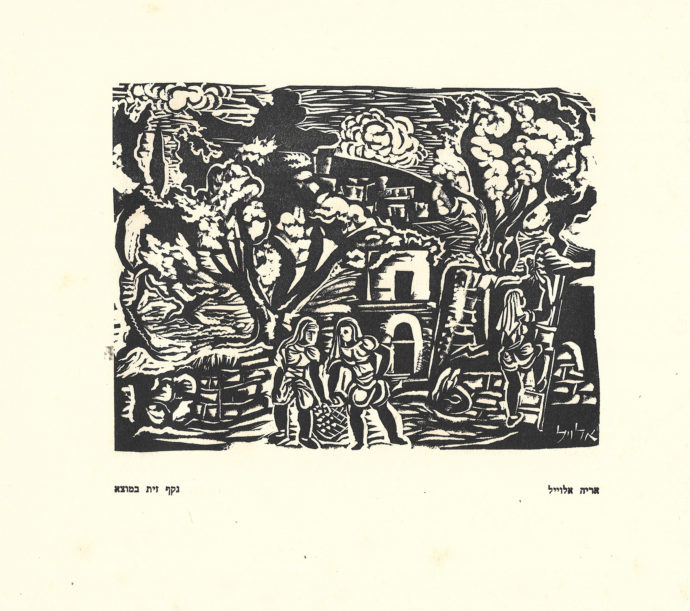
Picking olives in Motza
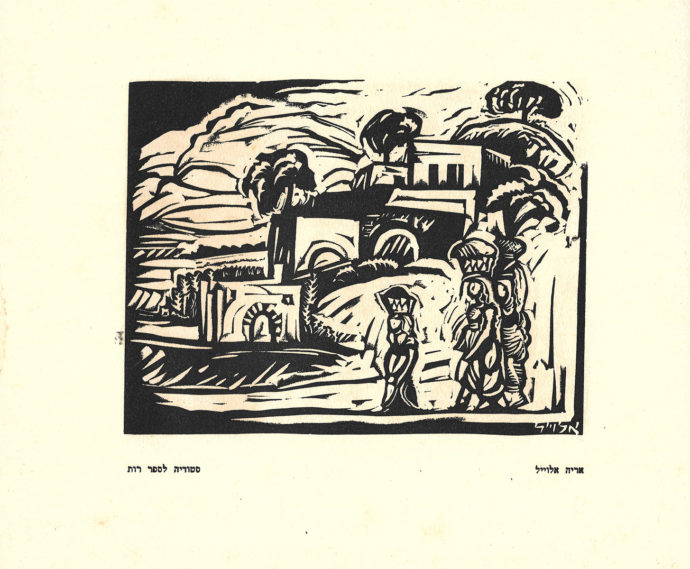
A study for the book of Ruth
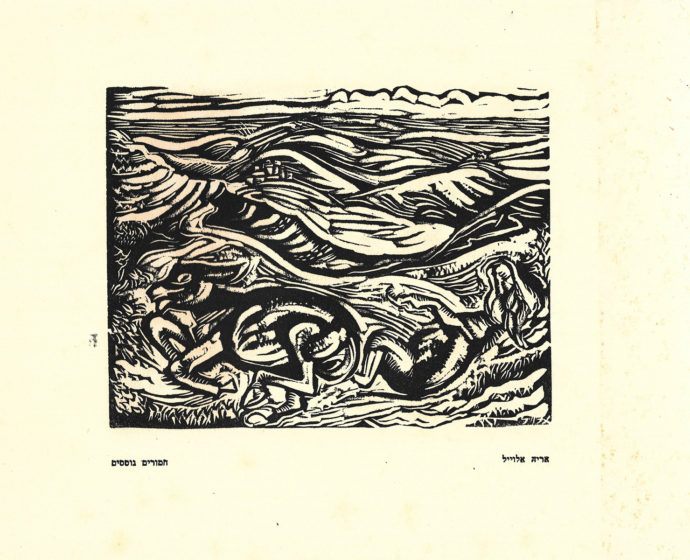
Dying Donkeys
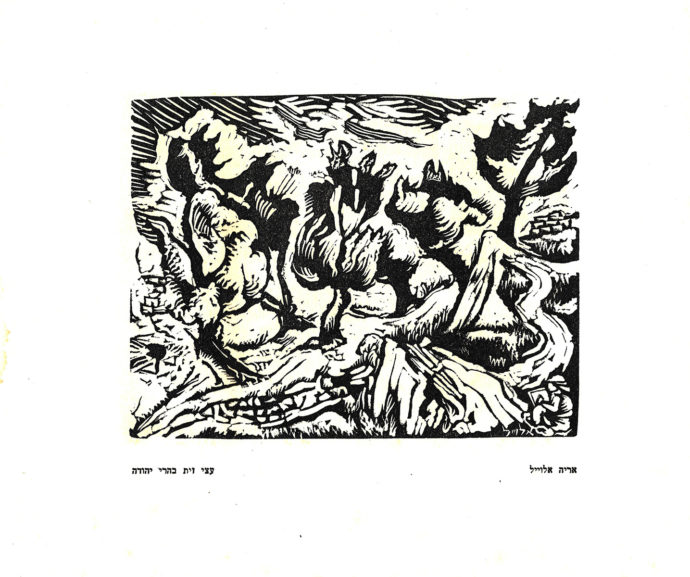
Olive trees in Judea Mountains

On the road to the village in Judea
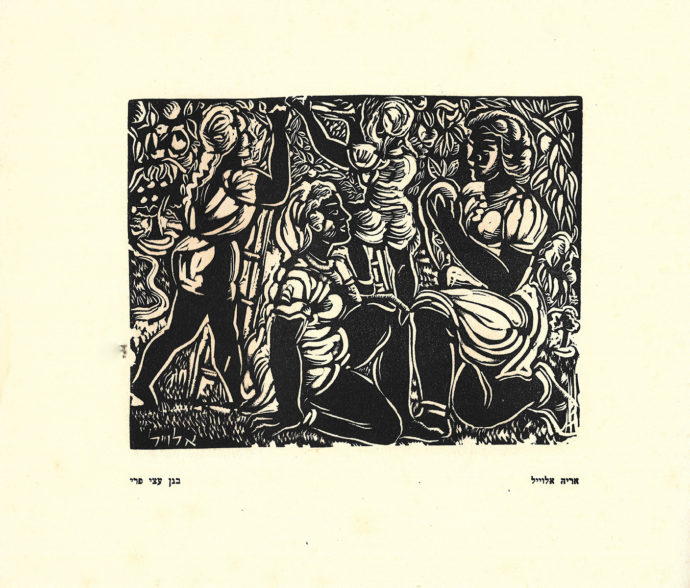
In the orchard
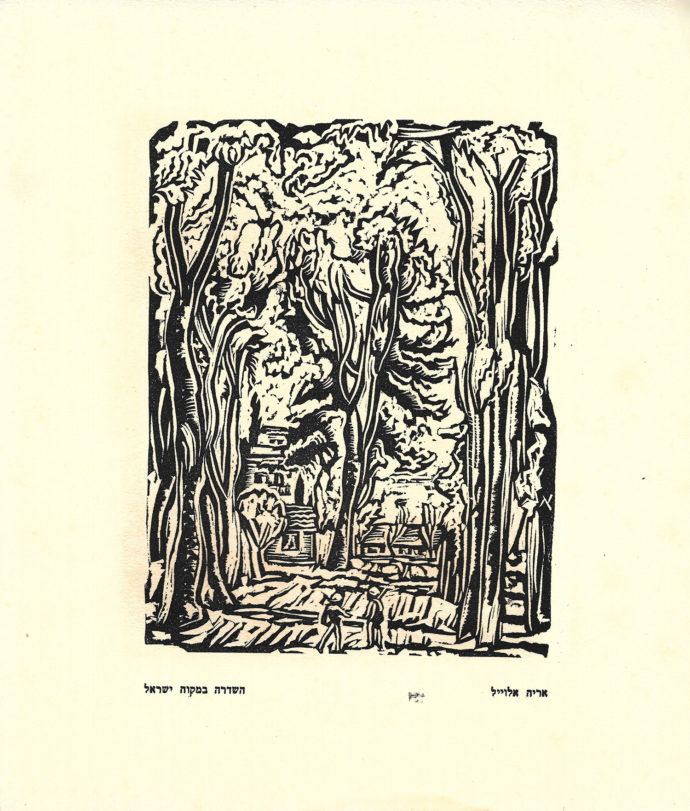
The road in Mikve Israel

Shiloh, on the road from Jerusalem to Nablus
In Kfar Yeladim (Children’s Village) facing the Tavor Mountain
In Shomron Mountains
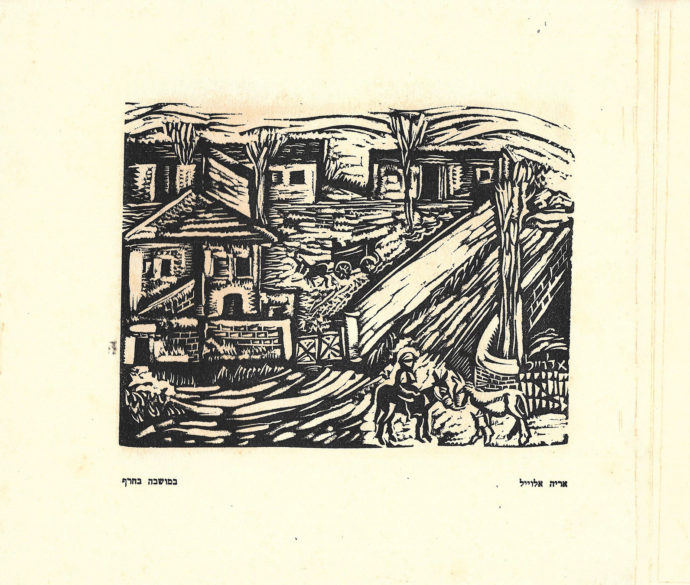
The village in winter
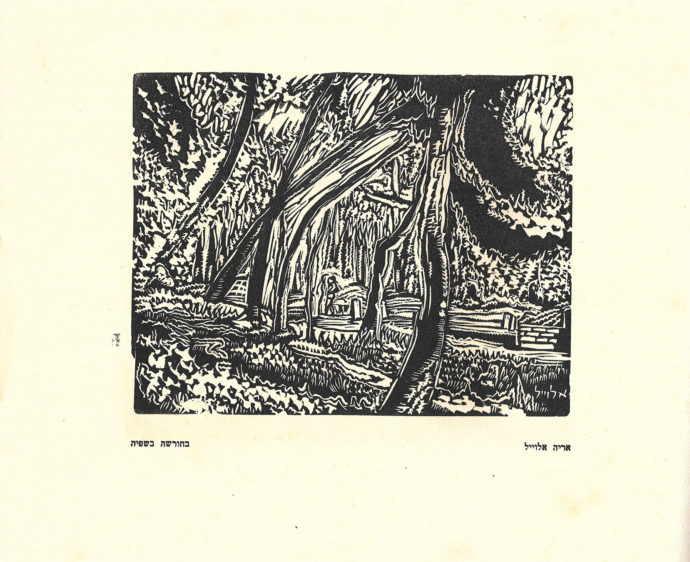
The grove in Shfeya
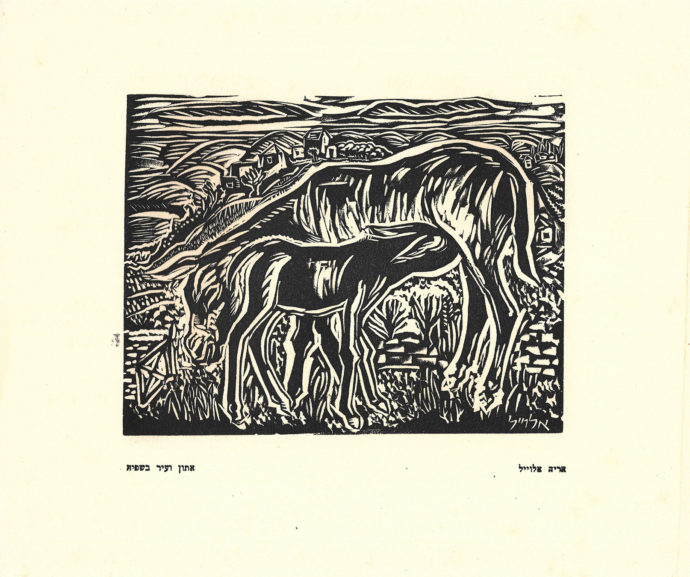
A donkey with her foal in Shfeya
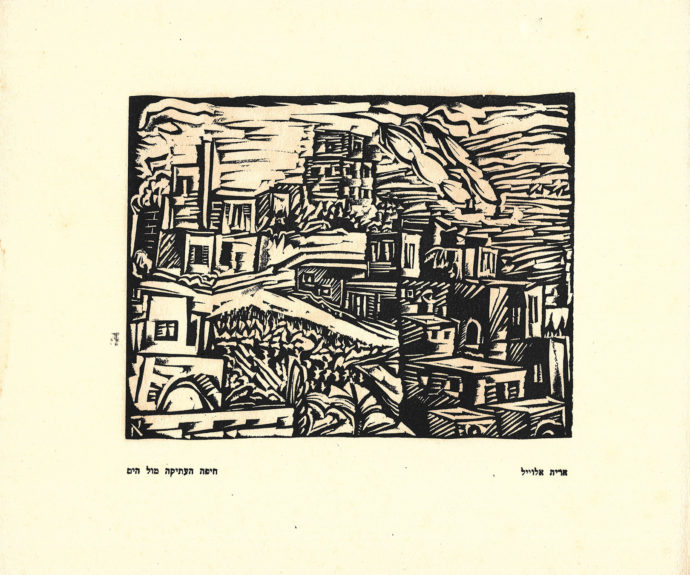
Old Haifa facing the sea
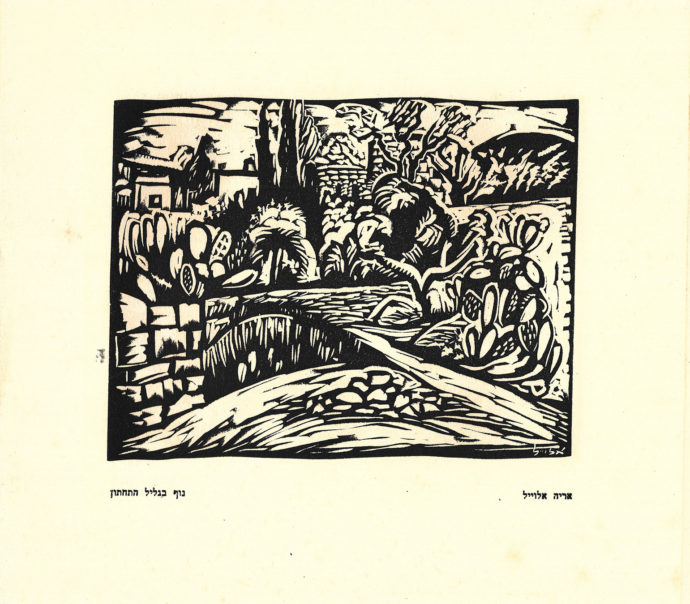
A view in Lower Galilee
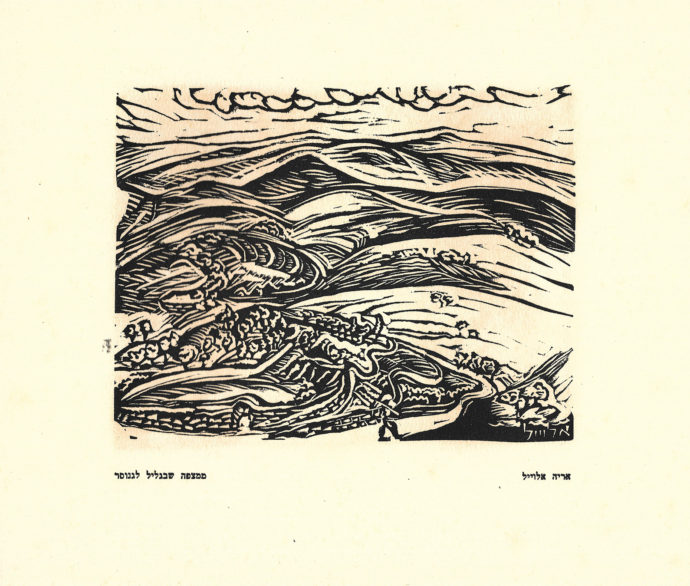
From Mitzpe in the Galilee to Genosar
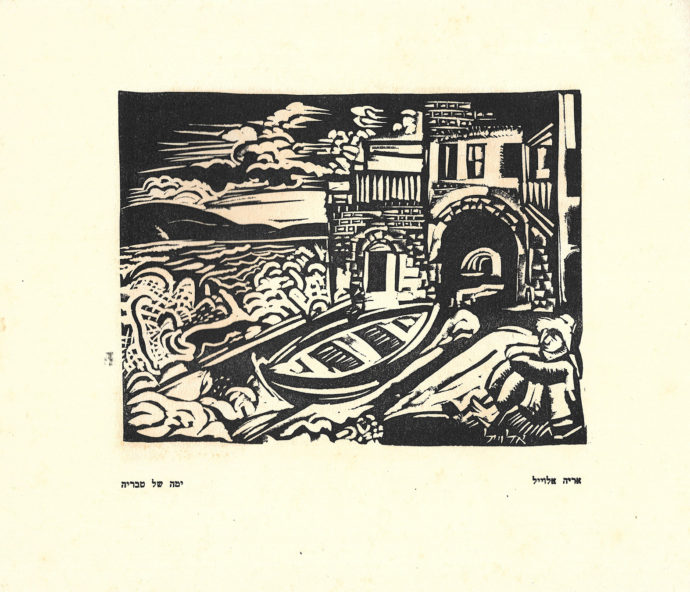
The sea of Tiberya
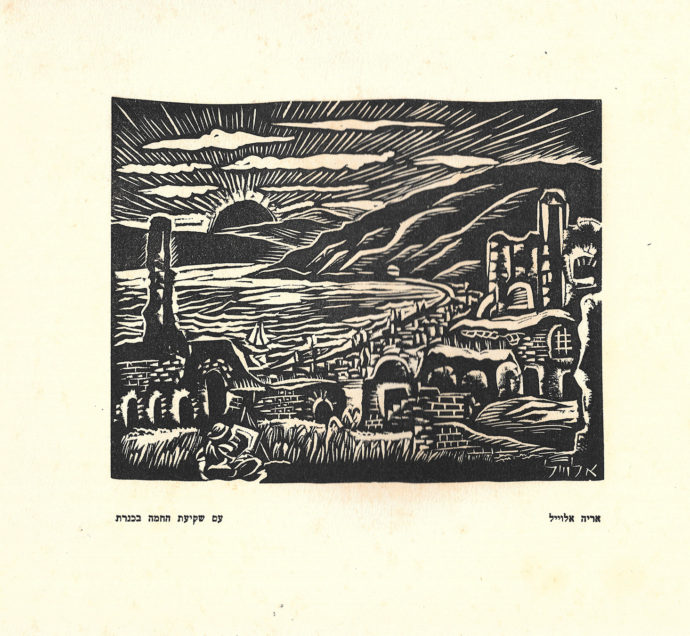
At sunset in the Kineret
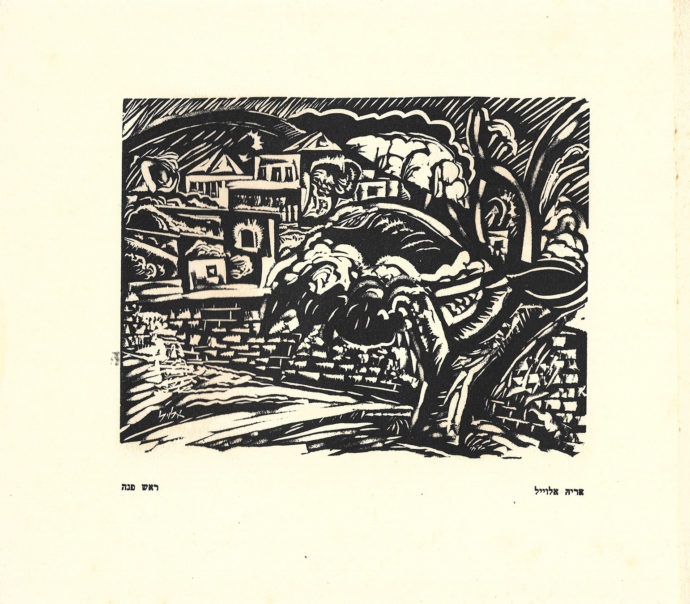
Rosh Pina
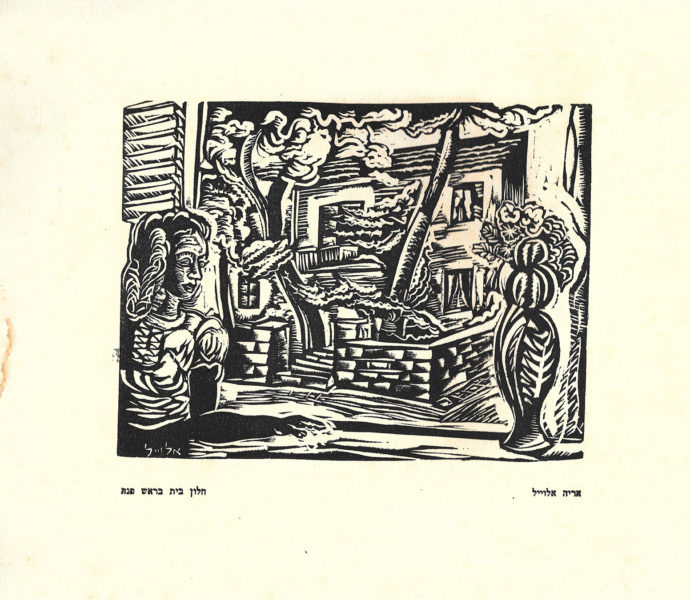
A window in Rosh Pina
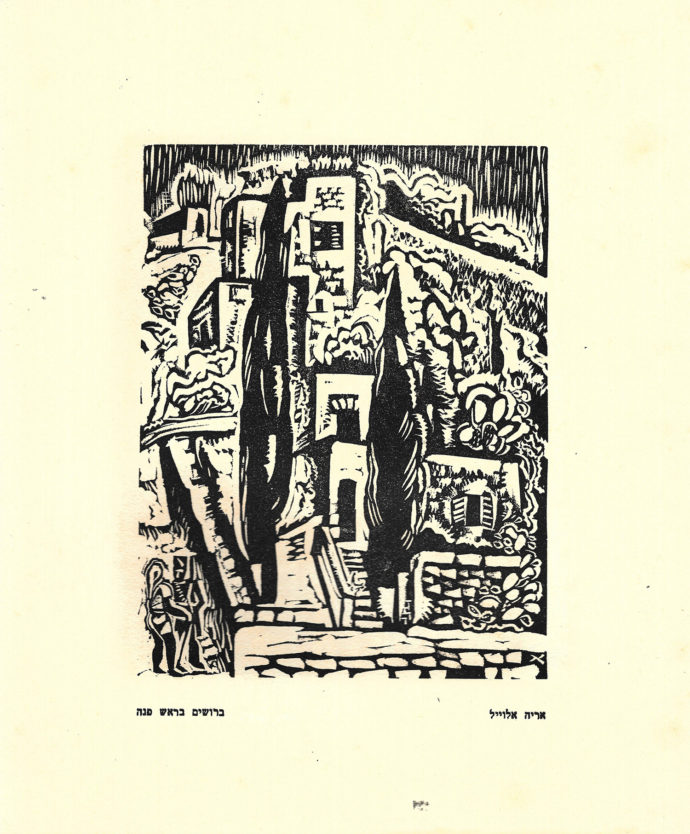
Cypresses in Rosh Pina
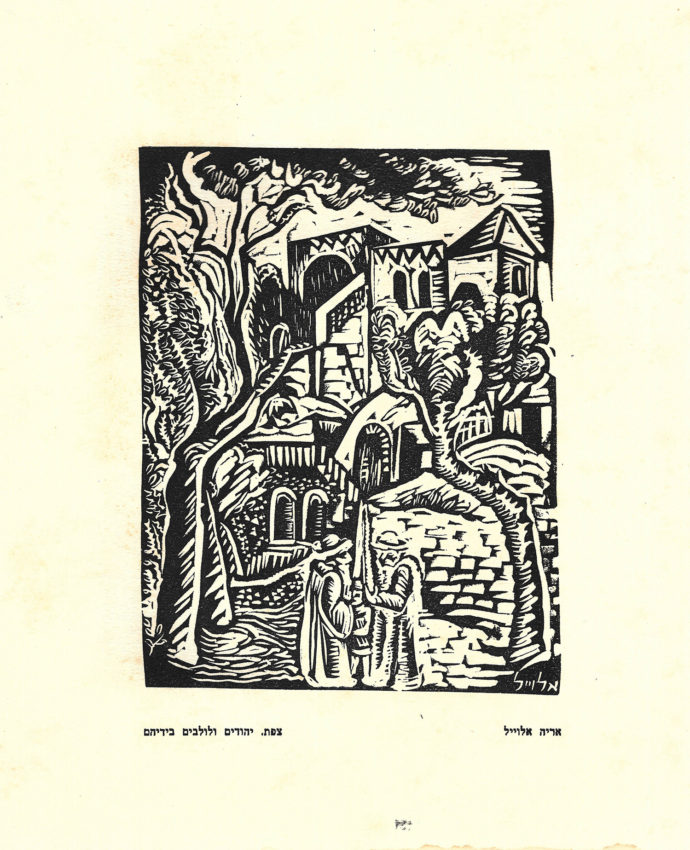
Safed, Jews with Lulav (ceremonial palm frond) in their hands
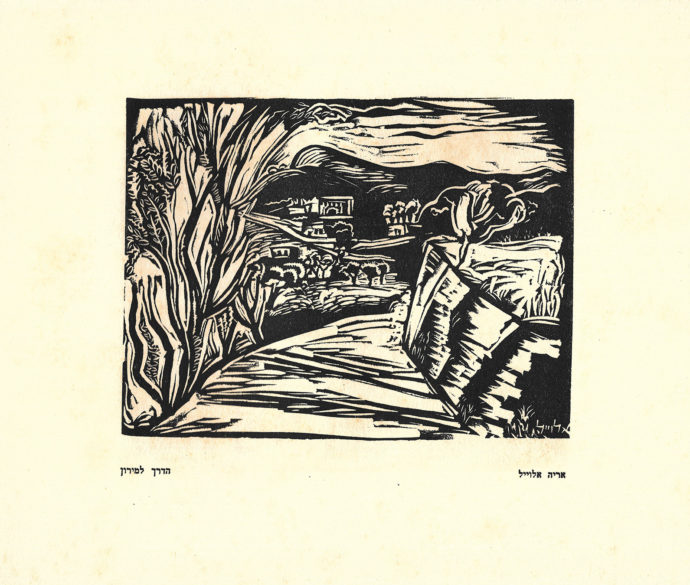
The road to Meiron
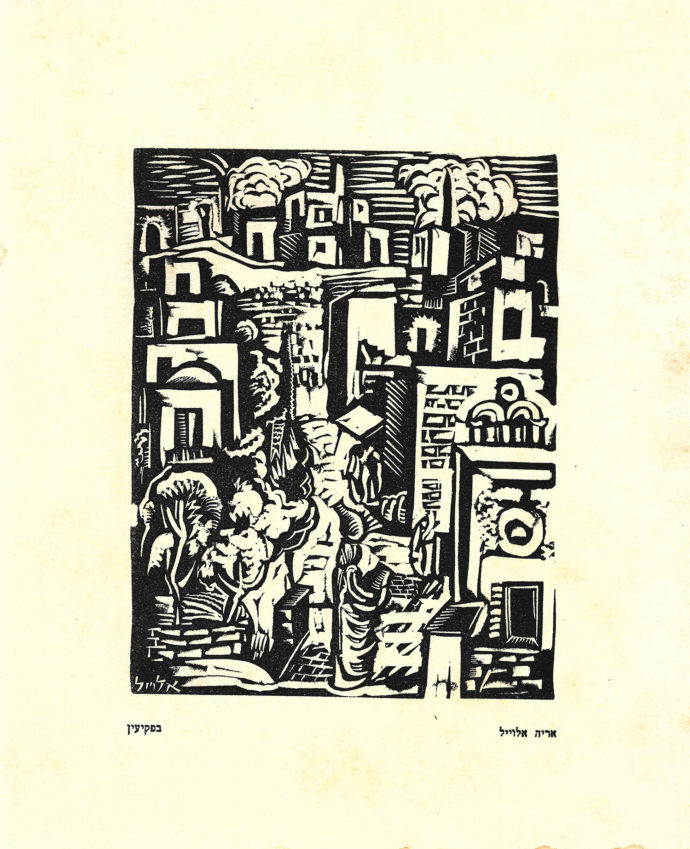
In Peqiin

Mount Canaan
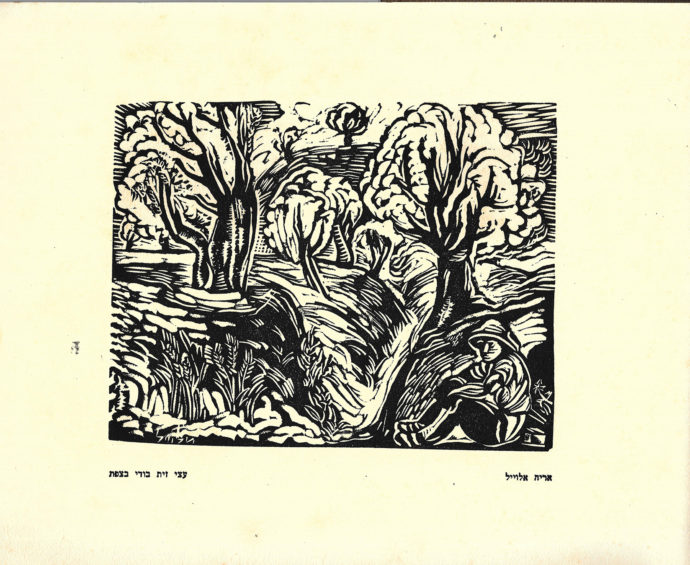
Olive trees in a wadi in Safed
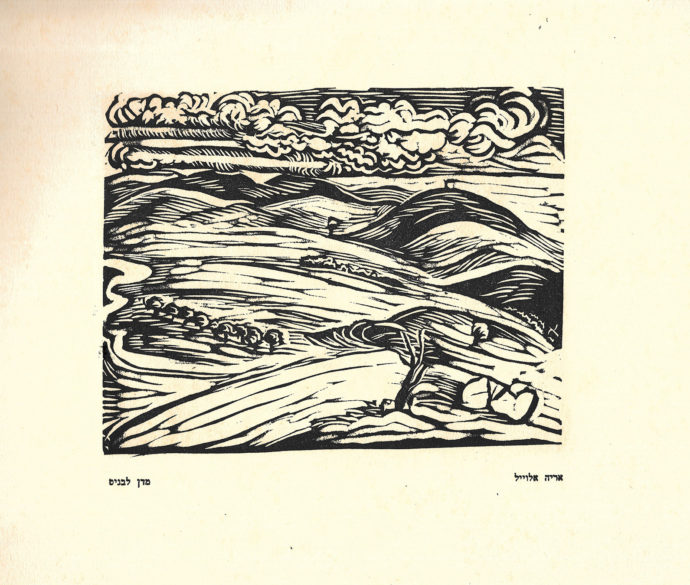
From Dan to the Banias
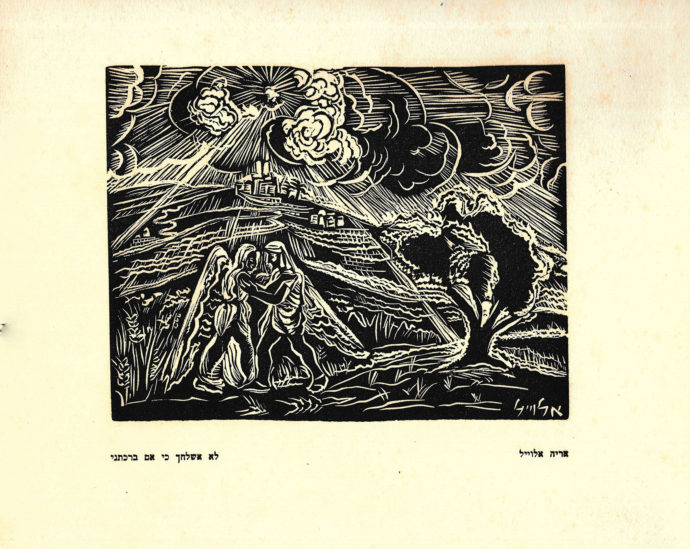
“I will not let you go unless you bless me”
Comments
Your comments are most welcome. Please send them to me at p1m1@comcast.net and I’ll add them here.
3 July 2021
Thank you, Scott, for this amazing ongoing presentation. Most intriguing and fascinating.
4 July 2021
Trackback URL: https://www.scottponemone.com/arieh-allweil-touring-the-land/trackback/

